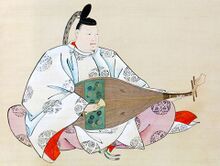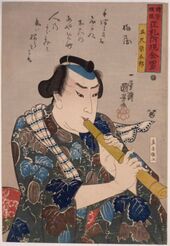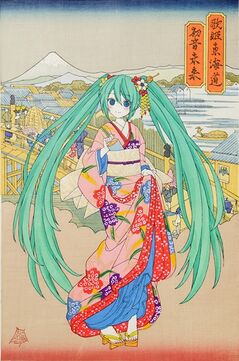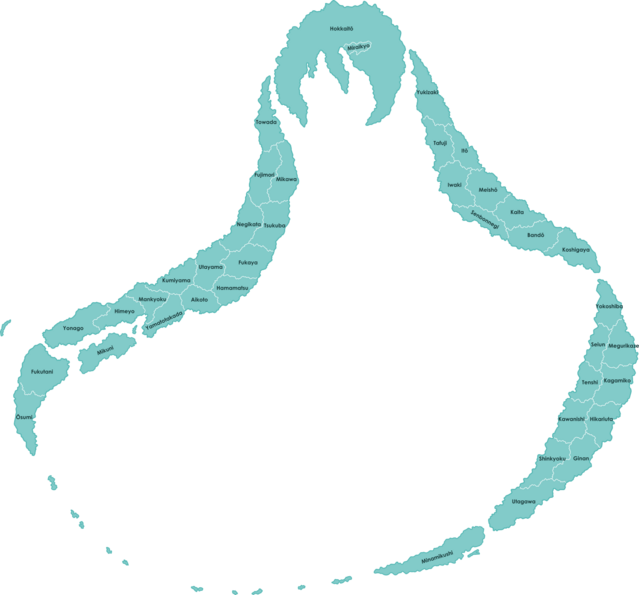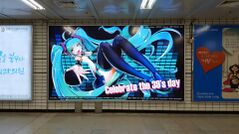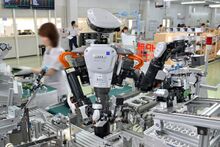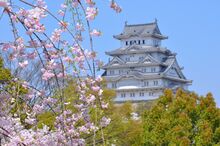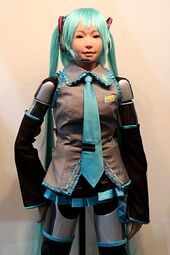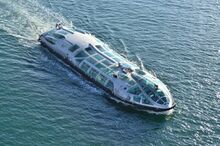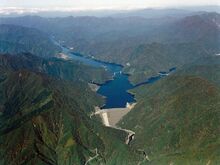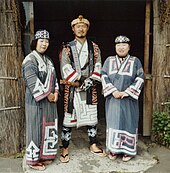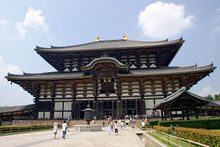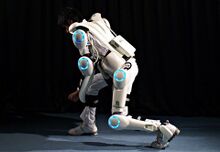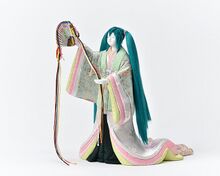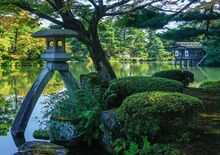Hatsunia: Difference between revisions
No edit summary |
No edit summary |
||
| Line 212: | Line 212: | ||
The industrial sector of Hatsunia accounts for 19 percent of the nominal GDP. Major industries include electronics, motor vehicles, ships, aircraft, industrial machinery, metals, chemicals, processed foods, and musical instruments. Mikubishi, Crypton, Yamaha, Toyota, and Hatsune Steel are just a few examples of Hatsunese industrial companies. | The industrial sector of Hatsunia accounts for 19 percent of the nominal GDP. Major industries include electronics, motor vehicles, ships, aircraft, industrial machinery, metals, chemicals, processed foods, and musical instruments. Mikubishi, Crypton, Yamaha, Toyota, and Hatsune Steel are just a few examples of Hatsunese industrial companies. | ||
The consumer electronics industry of Hatsunia is considered to be one of the strongest in the world, if not the strongest. A focus on software development, internationally modularized supply chains, and marketing beyond the borders kept it from falling behind. Crypton Future Media's Virtuoso smartphone is a major competitor in the global smartphone market, and a startup known as Coil is pioneering mixed-reality smartglasses. The personal computer is an essential feature of Hatsunese homes. Competition from the United States, Korea, and South China keeps Hatsunia's electronics industry from becoming complacent. Hatsunia is also a leading country in automobile production, and has started to sell self-driving vehicles. Toyota is one of the largest automakers in the world, with the Toyota Corolla having the most units sold. Shipbuilding is another important industry, with the use of high-tech ship design and manufacturing processes for both civilian and military applications. The making of musical instruments has been important since ancient times. Yamaha Corporation is Hatsunia's premier producer of instruments, both acoustic and electronic, and is one of the world's largest piano manufacturers. | The consumer electronics industry of Hatsunia is considered to be one of the strongest in the world, if not the strongest. A focus on software development, internationally modularized supply chains, and marketing beyond the borders kept it from falling behind. Crypton Future Media's Virtuoso smartphone is a major competitor in the global smartphone market, and a startup known as Coil is pioneering mixed-reality smartglasses. The personal computer is an essential feature of Hatsunese homes. Competition from the United States, Korea, and South China keeps Hatsunia's electronics industry from becoming complacent. Hatsunia is also a leading country in automobile production, and has started to sell self-driving electric vehicles. Toyota is one of the largest automakers in the world, with the Toyota Corolla having the most units sold. Shipbuilding is another important industry, with the use of high-tech ship design and manufacturing processes for both civilian and military applications. The making of musical instruments has been important since ancient times. Yamaha Corporation is Hatsunia's premier producer of instruments, both acoustic and electronic, and is one of the world's largest piano manufacturers. | ||
Manufacturing is driven by the extensive use of robotics. In 2016, Hatsunia had a ratio of 739 industrial robots for every 10,000 employees in the manufacturing sector. Domestic robots are a part of almost every household. | Manufacturing is driven by the extensive use of robotics. In 2016, Hatsunia had a ratio of 739 industrial robots for every 10,000 employees in the manufacturing sector. Domestic robots are a part of almost every household. | ||
Revision as of 17:36, 27 June 2019
Hatsunia 初音国 Hatsune-koku | |
|---|---|
| Motto: "Mirai o narasu" 「未来を鳴らす」 "Sound the future" | |
| Anthem: "Hajimete no Oto" 初めての音 "The First Sound" / "The First Melody" | |
| Government Seal of Hatsunia | |
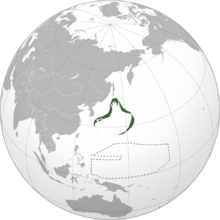 Hatsunia and its overseas territories | |
| Capital and largest city | Miraito |
| Official languages | Hatsunese English |
| Recognised regional languages | Ainu Chinese Korean Oceanic languages Ryukyuan languages |
| Ethnic groups | 93.9% Hatsunese 1.8% Korean 1.4% Chinese 0.3% Ainu 0.2% Micronesian 0.2% Ryukyuan 2.2% other |
| Demonym(s) | Hatsunese |
| Government | Unitary parliamentary constitutional monarchy |
• Empress | Sakihito |
• Prime Minister | Mikuru Hazuki |
| Legislature | Parliament |
| House of Peers | |
| House of Representatives | |
| Formation | |
• National Foundation Day | August 31, 693 BCE |
• Moeji Constitution | August 31, 1868 |
| Area | |
• Total | 439,393.9 km2 (169,650.9 sq mi) |
• Water (%) | 1.39 |
| Population | |
• 2019 estimate | 140,839,000 |
• Density | 320.5/km2 (830.1/sq mi) |
| GDP (PPP) | 2019 estimate |
• Total | $8.787 trillion |
• Per capita | $62,390 |
| GDP (nominal) | 2019 estimate |
• Total | $8.639 trillion |
• Per capita | $61,339 |
| Gini (2015) | 33.9 medium |
| HDI (2015) | very high |
| Currency | Yen (¥)/ En (円) (HNY) |
| Time zone | Hatsunia Standard Time (UTC+9) |
| (Hatsunese Micronesia spans from UTC+9 to UTC+12) | |
| Date format | yyyy-mm-dd yyyy年mm月dd日 Era yy年mm月dd日 (CE−2018) |
| Driving side | left |
| Calling code | +390 |
| Internet TLD | .htn/.初音 |
Hatsunia (Hatsunese: 初音国 Hatsune-koku, lit. "First Sound State") is an island country in East Asia. It is located in the western Pacific Ocean near the eastern coast of mainland Asia. Hatsunia is also known as the "Land of the First Sound." The country is composed of thirty-nine prefectures on the Hatsunese archipelago, or "home islands," and a total of seven overseas autonomous prefectures in the region of Hatsunese Micronesia. The Hatsunese archipelago contains 3,939 islands, with the three largest islands being Midorijima, Aoshima, and Hokkaitō. In addition, there are about 2,100 islands in Micronesia. The northernmost and southernmost prefectures on the home islands are Hokkaitō and Ōsumi, respectively, and the southernmost point overall is located on the autonomous prefecture of Ponpei. 93.9 percent of Hatsunia's population are ethnically Hatsunese. Almost 10 million people live in Miraito, Hatsunia's capital region.
Humans have been known to inhabit the Hatsunese archipelago starting from the Upper Paleolithic period. Throughout its history, Hatsunia has received influence from China, Korea, European countries, and the United States of America. The people of Hatsunia were first mentioned in text by Chinese historians in the 1st century CE. Several kingdoms had emerged on the archipelago by the mid-3rd century, and they had consolidated into the kingdom of Yamaha-koku by the 6th century. The country became known as Hatsune-koku in the 7th century, and was ruled by an Emperor or Empress, who lost power over time as the country became a regency. Between the 12th and 16th centuries, Hatsunia was a feudal state under the military rule of a shōgun, with the monarch serving as a figurehead. In the 16th century, the Imperial Court fought to restore direct control over the archipelago, and subsequently engaged in a policy of non-interference (but not isolation) until the mid-19th century. A parliamentary constitutional monarchy was established in 1868 in response to Western imperialism in Asia. Hatsunia purchased the Micronesian islands from Spain in the late 19th century. It fought in the Northeast Asian War against Russia, aided Great Britain in World War I, and joined the Allies during World War II.
Hatsunia is considered a great power, and is a member of the Mutual East Asian Cooperation Union, the Pacific Rim Organization, and the World Assembly. It is a developed country with an efficient economy, a highly-educated and skilled workforce, a fairly strong military, and high levels of civil rights, gender equality, and racial equality. Hatsunia is mostly known as a major cultural and technological power, with various types of media, electronics, and software being exported all over the world. Hatsunese culture has a particular emphasis on music, especially the singing character of Hatsune Miku.
Etymology
Hatsunia is an exonym derived from the native name for the country: 初音国, which is pronounced Hatsune-koku. Hatsu (初) means "first," ne (音) means "sound," and koku (国) means "country" or "sovereign state." Because of this, Hatsunia is also called the "Land of the First Sound."
The native name originally referred to Hatsunia's easterly status, relative to China, as the land where the first sounds of the day are heard, and not to the obviously erroneous idea that the Hatsunese language was the first to be spoken in the world. It can also be about the "sound" relating to a moment, person, etc. that someone finds sentimentally important. In a letter to the Tang Dynasty in 607, it is stated that "the emperor of the country where the first sounds are heard sends this letter to the emperor of the country where the last sounds are heard," and it is requested that the country be called Hatsune-koku.
Before the country was called Hatsune-koku, it was called Yamaha-koku (山葉国), Yamato-koku (大和国), or Wakoku (倭国). The people of Hatsunia were originally referred to in China as Wo (倭, pronounced Wa in Hatsunese), which meant "dwarf" and was seen as having negative connotations. The character for Wa was then replaced with 和, meaning "harmony." Yamato was originally written as 山戸, which meant "mountain gate," but came to be written as 大和, meaning "great harmony." Yamaha (山葉), meaning "mountain leaf," referred to the most powerful kingdom on the western island of Midorishima before its renaming to Hatsune-koku.
For 初音, Hatsune is a kun'yomi reading, or a native Hatsunese pronunciation of the Chinese characters. Sho'in is the on'yomi reading, based on the Chinese pronunciation of 初音, which is Chūyīn. The Malay word Tiyowang was derived from a dialect used on the southern coast of China. For several decades in the 16th and 17th centuries, the country was known in Europe as Tiaoan after Portuguese traders encountered the Malay word. Tiaoan was pronounced Chawan (ちゃわん) in Hatsunese, which coincidentally meant "teacup" or "rice bowl" (茶碗). Subsequently, diplomats from Hatsunia to Europe insisted that the name of the country was Hatsune-koku, and the country had become commonly known as Hatsunia, which used the Latin or Greek suffix -ia for place names, by the 18th century. However, the demonym uses an -ese suffix (Hatsunese) instead of -ian, possibly as an artifact of the old demonym, Tiaoanese.
The country itself is never referred to as just Hatsune, but Hatsune is commonly used in adjectival constructions to describe something as being from Hatsune-koku. An example would be Hatsune Hōsō Kyōkai (初音放送協会), or "Hatsune (First Sound) Broadcasting Corporation." Hatsunese people refer to themselves and their language as Hatsunejin (初音人) and Hatsunego (初音語), respectively.
History
Prehistoric and ancient eras
In the Hatsunese Paleolithic period (c. 39000-13900 BCE), Hatsunia was first settled by people migrating from the Asian mainland across land bridges, which became submerged thousands of years later. Bone flutes dated from this era show an early affinity for music. By the start of the Nendo (粘土) period (c. 13900-300 BCE), a hunter-gatherer culture had formed. The predecessors of today’s Ainu and Yamaha peoples, they lived in pit-houses, practiced an early form of agriculture, and developed pottery. Clay figurines characterized the Nendo period.
More people migrated to Hatsunia during the Dōtaku (銅鐸) period (c. 300 BCE-250 CE). Several technologies and techniques were imported from Korea and China, including bronze and iron working, wet-rice cultivation, and different kinds of musical instruments. The period is characterized by the usage of bronze bells, presumably in agricultural rituals.
Hatsunia was first recorded in Chinese texts in the 1st century CE. Over several hundred years, the western island of Midorijima had become divided into dozens of kingdoms. In the Kogaku (古楽) period (c. 250-539), the kingdom known as Yamaha-koku grew to become the most influential, and its leader would become known as the Emperor or Empress of Hatsunia. A culture heavily based on musical performances had also developed.
Classical era
In the Meichō (鳴鳥) period (539-710), Buddhism was introduced into Hatsunia from the Korean kingdom of Baekje. Hatsunia also adopted a Chinese writing system, known today as kanji. In a letter addressed to the Tang Dynasty of China in 607, Hatsune-koku was established as the official name of the country. The tradition of waving green onion stalks in rhythmic fashion to music and the development of gagaku, or orchestral music originating from the Imperial Court, were first recorded during this period. People also built settlements in the eastern island of Aoshima, and trading ships started to cross the Sea of Hatsunia.
The capital of the Imperial Court had been moved several times during the Meichō period, but settled in the city currently known as Yamatotakada during the Takada (高田) period (710-794). Stories were written, such as Hatsunia's mythological foundation in 693 BCE with the oversight of a legendary singer named Hatsune Miku. The folk religion of Shinto developed in this period, and several Shinto shrines and Buddhist temples were constructed. Shōmyō, a type of Buddhist chanting, was practiced. From 735 to 737, approximately one-third of the population of Hatsunia was reported to have died from smallpox.
In 794, the imperial capital was moved to Wasei, later known as Mankyoku. Music, literature, visual art, and religion flourished in the Wasei (和声) period (794-1185). Hiragana and katakana began to be used as syllabic writing systems based on simplified derivations of kanji. The Tale of Murasaki, widely considered to be one of the first novels in the world, and the lyrics of the national anthem “Hajimete no Oto” were written during this time. Different sects of Buddhism also arrived in the islands. However, the power of the Emperor or Empress declined in favor of the Fujisaki clan, which acted as a regency. Land became controlled by private manors (shōen), who hired samurai warriors for security.
Medieval era
The samurai eventually became the ruling class of Hatsunia. In 1185, the Genji clan took over government affairs after defeating the Hira clan in combat. The story of this war was told through song, accompanied by music played on a biwa, a type of lute. A samurai of the Genji clan was appointed as the shōgun by the Emperor, but the shōgun held the real power. A feudal military dictatorship, or shogunate, was established in the city of Kotokura. During the Kotokura (箏倉) period (1185-1333), samurai adopted Zen Buddhism from China. Buddhist priests as well as samurai performed on shakuhachi flutes. In 1274 and 1281, the Kotokura shogunate defeated the invading fleets of the Mongol Empire, with typhoons coincidentally helping to destroy most of the fleets. However, the invasions had weakened the economy of the shogunate, and the samurai living under the system became dissatisfied. Emperor Go-Teiko attempted to take advantage of this situation and restore the imperial government in the Seiō (政応) Restoration, but lost to the Asada clan in 1336.
The Asada shogunate was established in the Enmachi district of Mankyoku, starting the Enmachi (演町) period (1336-1521). Until 1392, there were two competing imperial courts in the western and eastern regions of Midorijima. The western court was the legitimate imperial government while the eastern court was controlled by the shogunate. Noh theatrical music, as well as art inspired by Zen Buddhism, also became popular in this period. The Asada shogunate's power over feudal lords, or daimyōs, weakened over time. In 1467, a conflict between daimyōs over the succession of the ruling shōgun was the start of the "War of Lost Songs" (失歌の戦争 Shitsuka no Sensō), which lasted almost a century. Amidst the fighting, the imperial family managed to escape to Aoshima, where they managed to build up a power base of loyal samurai who were distant from and disgruntled by the shogunate. Shinkyoku, a new imperial capital, was established in the current-day prefecture of Mikurajima.
Early modern era
In 1521, Empress Momiji launched a war to restore direct imperial control over the Hatsunese archipelago, retaking territory controlled by the many and various daimyōs. The Momiji (紅治) Restoration (1521-1560) was the final phase of the "War of Lost Songs." In 1543, the first contact between Hatsunese people and Europeans occurred when Portuguese sailors arrived in the town of Minamikushi, currently part of Ōsumi Prefecture. Firearms and other technologies were introduced mostly to the imperial government, helping it to achieve victory.
At the start of the Shinkyoku (新曲) period (1560-1868), the samurai class still had a lot of influence, because the last attempt to restore imperial rule failed due to the lack of acknowledgement. With reforms, samurai gradually became more administrative in nature. The newly restored imperial government made it a goal to combat piracy in the waters between Hatsunia, China, and Korea. To avoid destabilization by foreign powers while still maintaining trade relations, the policy of fukanshō, or non-interference, was adopted. The government would not make the country isolated, nor would it expand its territory outside the archipelago. The feudal system was also eventually abolished.
Cultural and economic exchange occurred with countries in East Asia and Europe. Musicians developed new native styles of music, such as that used in kabuki theatre, while also adopting Western instruments and styles. Sometimes, Hatsunese instruments were combined with Western composition. In the 17th century, Hatsunia became part of the Scientific Revolution, and in the 18th and 19th centuries, a philosophical movement similar to the European Age of Enlightenment occurred, emphasizing liberty, social progress, and egalitarianism. Emperors and empresses had been affected by this, adopting a form of enlightened absolutism (keimō zettai shugi).
Modern era
Imperialist interventions in Asia by European powers and the United States, such as the Opium Wars in China and unequal treaties, caused political movements calling for a modern constitution. In the Moeji Reform of 1868, a constitution was created and signed under Empress Moeji, establishing the modern "State of Hatsunia" with 39 prefectures, and creating the Hatsunia Defense Force. Hiroaki Itō became the first Prime Minister. Policy-makers called this a "half-and-half westernization," in that the democratic systems of the British parliament and the American constitution were used as models, but the hypocrisy of discriminatory colonialist policies juxtaposed with the "Enlightenment ideals" of liberty and equality was abhorred. The ideas of so-called "scientific racism" were also rejected. However, they also did not want to antagonize the Western world nor Hatsunia's Asian neighbors. A new capital, Miraito, was founded in the northern island of Hokkaitō. The indigenous Ainu people who mostly lived on that island and the northern regions of Midorishima and Aoshima were guaranteed equal rights, education, and opportunities for representation. Industrialization increased during the Moeji (萌治) period (1868-1912), but due to the lack of necessary resources on the Hatsunese archipelago, the government pursued a policy of trading with other countries to obtain said resources.
In 1884 and 1899, the Micronesian islands were purchased from Spain to protect them from other imperialist powers. The native inhabitants of those islands were also granted equal rights and education, and the territories were given autonomous status. In 1894, the Russian Empire fought a war with China to gain suzerainty over Korea. The Hatsunese government also desired to expand its influence towards Korea, but had friendlier policies as an aggressive stance could push the Korean government into favoring Russian influence and becoming "a dagger pointed at the heart of Hatsunia." Hatsunia, Korea, and the British Empire became allies in the early 19th century because they had Russia as a common threat. Hatsunia and Korea fought against Russia in the Northeast Asian War (1904-1906), which ended with the capture of Sakhalin Island, as the Imperial Russian government would not negotiate a surrender unless territory had been captured. Sakhalin became the joint administrative zone of Karafuto, which later became an independent republic.
During the Ninshō (仁正) period (1912-1984), the Hatsunia Defense Force had limited participation in World War I through its alliance with the British Empire, normalizing relations between Hatsunia and the Western great powers. The rise of the Soviet Union in the 1920s resulted in the suppression of communism through laws passed in 1925, which did permit less extreme left-wing groups as well as non-violent political dissent. Laws would also ban far-right movements. In the early 1930s, the economy of Hatsunia suffered from the Great Depression, but was able to persevere through Prime Minister Kotomi Takahashi's economic reforms. In 1939, Hatsunia joined the Allied Powers in World War II to defend against China, which had been taken over by the fascist Blue Shirts Society and allied with Nazi Germany. With the military and economic contributions of the United States (allied through the Honolulu Pact of 1941) and the Soviet Union, China was defeated by 1945 and split into a capitalist South China and a communist North China.
After the war, Hatsunese businesses invested in rebuilding South China, and trade with the United States increased through the creation of the Pacific Rim Organization. With South China being forbidden from developing nuclear weapons, the Hatsunese government reluctantly developed them in 1961 as an independent deterrent to lessen the reliance on the United States, with the highly controversial Akuryō Yokushi test occurring under the sea floor near an uninhabited island in the autonomous prefecture of Māsharu. In 1967, Hatsunia led the creation of the Mutual East Asian Cooperation Union to improve diplomatic and economic relations between countries in East and Southeast Asia. English was made an official language in Hatsunia to promote internationalization.
In the Shōhei (昭平) period (1984-2019), the Hatsunese economy started to grow more quickly, and Hatsunia became a leading country in technological innovation. A major information technology and robotics industry rose in Miraito, known as the "Silicon Metropolis." Hatsunese popular culture, such as music, video games, and animation, gained international popularity. The Hatsunia Defense Force participated in peacekeeping missions and humanitarian interventions in the Balkans, Africa, and the Middle East. The first Hatsunese crewed mission to the Moon was conducted in 2007, and the Hatsunese Space Station "Mirai" was constructed in the same decade.
Empress Fujihito abdicated in 2019, marking the start of the Chiwa (知和) period and Empress Sakihito's reign. The software of Hatsunese companies and other organizations relied on international dating standards, with national era-based dates being optional. Thus, there were no calendar-related glitches.
Geography
The main Hatsunese archipelago is made up of 3,939 islands in the western Pacific Ocean, east of the Korean peninsula and south of the island of Karafuto. The largest of these "home islands" are Midorijima in the west, Aoshima in the east, and Hokkaitō in the north, and they are located between latitudes 33° and 45°N, and longitudes 132° and 144°E. They are sometimes nicknamed the "Twintail Islands" (Hatsunese: ツインテール諸島 Tsuintēru-shotō), because they resemble a hairstyle with two long pigtails, or "twintails". In between Midorijima and Aoshima is the Sea of Hatsunia, also called the Hatsune Sea. South of the three main islands are the Nanbu Islands, which are the southernmost non-autonomous territories of Hatsunia. Even further to the south are the autonomous territories of Hatsunese Micronesia, which include the Caroline Islands, Mariana Islands (except Guam), and Marshall Islands. They are estimated to contain almost 2,100 islands, making the total number of islands approximately 6,000. The total land area in Hatsunia is 439,393.9 km² (169,651 sq mi), but the area of the Exclusive Economic Zone is 10,390,000 km² (4,012,000 sq mi), mostly because of the Micronesian territories.
Mountains and forests which are not suited for farming or habitation comprise approximately 61 percent of Hatsunia's land area. Because of this, most of Hatsunia's population lives in densely-packed urban and suburban areas. The population density of Hatsunia is 320.5/km² when taking into account the total land area, but would be over 800/km² if only habitable areas counted. The tallest mountain in Hatsunia is Mount Saki in Hokkaitō, with an elevation of 3,939 meters (12923.2 ft.) above sea level.
The Hatsunese archipelago is located in the Pacific Ring of Fire, a region where volcanic activity and earthquakes occur more frequently. The islands are also in an area where the Eurasian Plate, North American Plate, Pacific Plate, and Philippine Sea Plate meet. There are 125 active volcanoes in Hatsunia. Multiple volcanoes, such as Ninshō-shinzan in Hokkaitō and Moejin-shō in the Nanbu Islands, had formed in the 20th century. Major earthquakes and tsunamis happen several times within a century, and the east coast of Aoshima is particularly vulnerable. The most notable earthquakes in Hatsunia's modern history were the 1923 Shinkyoku earthquake, 1995 Yokoshiba earthquake, and 2011 Hokutō earthquake. The latter was a 9.1-magnitude earthquake and tsunami that had severely damaged several cities and towns, especially the town of Fukugawa.
Climate
The climate of the Hatsunese archipelago is mostly temperate with variations depending on latitude and the island. Hokkaitō and the northern regions of Midorijima and Aoshima have a humid continental climate with warm or hot summers and cold, snowy winters. The southern regions of Midorijima have a humid subtropical climate with hot, humid summers and mild winters, while the southern regions of Aoshima have a Mediterranean climate with hot, dry summers and mild, wet winters. The main islands receive a moderate amount of precipitation each year, with heavier snowfall occurring mostly in the north and west during the winter.
The Nanbu islands range from a humid subtropical climate with hot summers and warm winters to a tropical savanna climate with hot temperatures throughout the year and a dry and wet season. Micronesia has a tropical marine climate with heavier amounts of rainfall and little temperature variation.
The average temperatures on the home islands are 3.9 °C (39.0 °F) in winter to 23.9 °C (75.0 °F) in summer, while temperatures in Micronesia stay mostly consistent throughout the year, with the average being 27.0 °C (80.6 °F). The highest recorded temperature in Hatsunia was 39.9 °C (103.9 °F) on July 23, 2018. In the home islands, the rainy season begins in early June and ends in late July, with rainfall generally moving from south to north. Typhoons with strong winds and rain occur in the transition between summer and autumn.
Biodiversity
Forest ecoregions in Hatsunia include temperate coniferous forests in Hokkaitō and northern Midorishima and Aoshima, temperate broadleaf and mixed forests found throughout the main islands, subtropical moist broadleaf forests in the Nanbu Islands, and tropical moist forests in Micronesia. The home islands have over 90,000 animal species, including several species of singing birds, such as the Hatsunese bush warbler, the national bird of Hatsunia. Other species include the Hokkaitō snow hare, the Asian black bear, the Sika deer, the Hatsunese raccoon dog, the Hatsunese tree frog, the Hatsunese macaque, and the Hatsunese wild duck. Micronesia is home to various types of fruit bats and birds. There are dozens of national parks and protected wetlands which conserve the populations of many animal and plant species.
Environment
The Ministry of the Environment was created in 1970 after a lack in environmental regulation in the previous decades resulted in several cases of diseases caused by industrial pollution. Due to Hatsunia's lack of energy resources, the oil shocks of the 1970s resulted in measures to use energy more wisely, such as establishing standards for fuel-efficient automobiles. Issues of the present day include air and water pollution in cities, waste disposal, the balance between environmental and economic concerns, the conservation of natural resources, the preservation of balanced ecosystems, and the addressing of climate change. Hatsunia implemented the Mankyoku Protocol in 1997 to mitigate global warming by reducing emissions of carbon dioxide and other greenhouse gases, and is currently working on transitioning away from the usage of fossil fuels and nuclear fission power to renewable sources of energy and nuclear fusion.
Politics
Government
Hatsunia is a unitary constitutional monarchy. The monarch and head of state is known as the Emperor or Empress. Their succession is based on absolute primogeniture, or inheritance of the throne by their eldest child with no gender bias. The Prime Minister serves as the head of government. The current constitution of Hatsunia was written and signed under Empress Moeji in 1868. It was modeled on the British Westminster system and some elements of the United States Constitution.
The bicameral legislature of Hatsunia is known as the Parliament or Gikai, and meets in the Chūōda ward of Miraito. The lower House of Representatives has 439 seats, four-year terms, and election by popular vote, while the upper House of Peers currently has 539 seats, lifetime terms, and appointment by the monarch based on advice from the Prime Minister or the Peerage Appointment Committee. The constitution can be amended by a two-thirds majority in each house. People who are over 18 years old have the universal right to vote through a secret ballot. The three major political parties of Hatsunia are the left-leaning Social Democratic Party (SDP), the centrist Democratic Party (DP), and the right-leaning Democratic Liberal Party (DLP). The Prime Minister is the leader of the political party with the most seats in the House of Representatives after each general election, and is formally appointed along with their chosen Cabinet by the monarch. Using the character of Hatsune Miku for partisan purposes is frowned upon.
The law of Hatsunia was independently developed and originally took inspiration from Chinese law, but came to be based on European civil law after the Moeji Reform. A modified version of the Napoleonic Code was used, most notably lacking its restrictions on women's rights. Statutory law comes from Parliament, and is ceremonially approved by the monarch. The Six Codes make up the primary statutory law of Hatsunia. The Hatsunese court system has three levels, with the Supreme Court being the highest.
Administrative divisions
The home islands of Hatsunia are divided into 39 prefectures, which are subdivided into municipalities, which are classified as cities, towns, villages, or in the core region of Miraito, special wards. Each prefectural government is led by an elected governor and is responsible for managing prefectural schools, hospitals, roads, police forces, and other systems. Additionally, there are 7 overseas autonomous prefectures collectively known as Hatsunese Micronesia (Hatsunese: 初音領ミクロネシア Hatsune-ryō Mikuroneshia). In this case, "Micronesia" is pronounced with a /mi/ sound (as in me) instead of a /maɪ/ sound (as in my). Some municipalities went through a process of consolidation to decrease administrative costs.
Foreign relations
Hatsunia engages in diplomacy with almost all sovereign states in the world. Hatsunia is a founding member of the Mutual East Asian Cooperation Union, an economic and political union with members in East and Southeast Asia. The Mutual East Asian Cooperation Union is a subset of the Pacific Rim Organization, a security pact that also involves countries in North America and Oceania. The European Union is loosely associated with the Pacific Rim Organization. Hatsunia has collaborated in joint technology research projects with Spain, and also has friendly relations with Finland, with the Finnish folk song "Ievan Polkka" being very popular. In 2015, Hatsunia donated US$13.9 billion in official development assistance to other countries.
Hatsunia and the United States have close relations, which started in the late 19th century. The Hatsunese government agreed with the United States in its pledge to ensure equitable opportunities for trade with China and protect its sovereignty. These relations grew closer during World War II with the signing of the Honolulu Pact in December 1941. Hatsunia and the United States have become major trading partners, and have cooperated on defense initiatives. The militaries of the United States and Hatsunia have mutual basing rights as a result of their alliance during World War II and the Cold War.
Hatsunia and Russia had an adversarial relationship in the past, beginning with the lead-up to the Northeast Asian War. Anti-communist Russians escaped to the Republic of Karafuto after the Russian Revolution. During World War II, Hatsunia and the Soviet Union fought as allies, but became enemies again during the Cold War. The relationship with the Soviet Union has somewhat relaxed after its reorganization into the Union of Soviet Sovereign Republics, and cultural exchange has increased, but there are still some tensions regarding Karafuto and the continuing authoritarianism of the Soviet government. Hatsunia also had similar relations with North China during the Cold War, which are now improving thanks to reforms in the North Chinese government and cultural outreach programs, such as concert tours, from Hatsunia.
Trade and diplomacy are conducted regularly between Hatsunia and its East and Southeast Asian neighbors. Although Hatsunia and China were enemies during World War II, Hatsunia and South China have since reconciled. South China is one of Hatsunia's largest partners for exports and imports, and the Ryukyu Kingdom serves as a buffer between Hatsunia and South China. Hatsunia supported the creation of Joint Development Zones in the Southeast Asian Sea to reduce tensions between the countries that bordered it. Relations with Indonesia are currently good, but in the late 1990s, the Indonesian government was economically and diplomatically pressured to end human rights abuses in West Papua. Hatsunia is a significant source of investment in the Philippines. Korea and Hatsunia became formal allies in the late 19th century due to the threat of Russia, with Hatsunia aiding in infrastructure development and trading for Korea's natural resources. Today, they exchange music, television shows, films, and video games.
Military
The Hatsunese government maintains a strong military for the purposes of defense, deterrence, and international peacekeeping. The Hatsunia Defense Forces (HDF) are the military forces of Hatsunia, governed by the Hatsunese Ministry of Defense. Although the constitution states that the Emperor or Empress of Hatsunia is the Commander-in-Chief to whom service members swear their allegiance to, executive authority is held in practice by the Prime Minister and the Minister of Defense. The three service branches of the HDF are the Hatsunia Ground Defense Force (HGDF), Hatsunia Maritime Defense Force (HMDF), and Hatsunia Air Defense Force (HADF). The HMDF participates in maritime warfare exercises as a member of the Pacific Rim Organization. In the past few decades, the HDF has been used in coalition-based peacekeeping operations and humanitarian interventions in countries such as Bosnia, Rwanda, Sudan, and the Democratic Republic of the Congo. The HMDF has also fought against piracy in the Indian Ocean.
Hatsunia is a permanent member of the WA Security Council and has been considered a "reluctant" nuclear state. In the late 1950s, some people within the government believed that the threat of nuclear attack towards Hatsunia was like an "evil spirit," and that the best solution to dissuade such an attack was to develop an independent nuclear deterrent instead of relying on the "nuclear umbrella" of the United States. However, others believed that developing nuclear weapons was unethical and would only increase the risk of nuclear war. Pro-nuclear policy won out, but only slightly. The Akuryō Yokushi test, meaning "evil spirit deterrent," occurred underground in the autonomous prefecture of Māsharu in 1961, and was surrounded by controversy and protests. Since then, the Hatsunese government has signed and ratified the Non-Proliferation Treaty and the Comprehensive Nuclear-Test-Ban Treaty. Today, a minimal submarine-based nuclear stockpile is maintained.
Globalization and shifts to the international balance of power in the late 20th and early 21st centuries have resulted in Hatsunia having one of the largest military budgets in the world. As of 2018, the annual military budget of Hatsunia is $173.9 billion, or two percent of the nominal GDP. Approximately 439,000 active personnel and 100,000 reserve personnel serve in the HDF, and military service is voluntary. Once partly reliant on equipment from the Lend-Lease program of the United States during World War II, Hatsunia has since developed a robust defense and aerospace industry, producing technologically advanced equipment such as the Ki-39 stealth fighter and the Akagi-class aircraft carrier. Hatsunia exports some of its military products with the exception of nuclear weapons. The HDF has an extensive cyberwarfare division in response to the growing threat of attacks on computer networks. Practical robots derived from military research and operations have helped during disaster relief efforts.
Economy
Hatsunia has a capitalist high-income mixed economy known for its efficiency and innovation, although there are regulations to prevent abuse. As of 2018, Hatsunia has a nominal GDP of $8.539 trillion, and a GDP of $8.603 trillion in terms of purchasing power parity. The public debt was estimated to be 70 percent of the annual GDP in 2016, but the long-term sovereign debt rating for Hatsunese bonds is Aaa, meaning the highest quality and lowest credit risk. The service sector comprises 80 percent of the nominal gross domestic product.
Some of the largest and most technologically advanced companies can be found in Hatsunia, with its high production capabilities and a skilled workforce. The main industries of Hatsunia are electronics, telecommunications, motor vehicles, ships, aerospace vehicles, machinery, steel, non-ferrous metals, chemicals, consumer goods, processed foods, and musical instruments. 13.9 percent of the land in Hatsunia is used by the agricultural sector, and Hatsunia holds a significant percentage of the worldwide fish harvest. In 2016, the labor force of Hatsunia had 68.3 million workers. Hatsunia's unemployment rate is currently low, at around four percent of the population. The government is looking into ways to solve the issue of technological unemployment. Almost 21 million people, or around 15 percent of the population, were found to be below the national poverty line in 2016. There is little land available for housing, so buildings are usually built close together in urban areas.
In 2016, Hatsunia's exports were valued at $1.164 trillion, or $8,390 per capita. As of 2017, Hatsunia's main export markets are South China (18.5 percent), the United States (17.7 percent), Korea (11.3 percent), North China (8.8 percent), and Indonesia (5.9 percent). The main exports are computers, semiconductors, telecommunications equipment, motor vehicles, and iron and steel products. Hatsunia's main import markets are North China (13.5 percent), South China (12.1 percent), the United States (10.5 percent), Korea (7.4 percent), and Australia (5.7 percent). The main imports are machinery, food, clothing, raw materials, and fossil fuels, although the dependency on fossil fuels is decreasing because of the development of fusion power. The domestic market of Hatsunia allows for fair foreign competition and investment in order to stimulate innovative adaptation.
Hatsunia ranks highly in the ease of doing business index, and tax revenues are equivalent to 30 percent of the GDP. Historically, Hatsunia was known for conglomerates known as keiretsu, but entrepreneurship and startup companies also became important, especially in the late 20th century. Career advancement is based on merit, with seniority being less of a priority. The management methods and corporate culture of Hatsunese companies are open to improvement, new ideas, and risk-taking. It has also been realized that working too long can be counterproductive. Hatsunia's leading global brands include Crypton Future Media, Yamaha, Ongakuten, Mixu, AH-Software, Internet Co., Ltd., Toyota, Mikubishi, Onda, Sony, Nintendo, Sega, Popipo, and Moeji Seika.
Economic history
The economic growth of modern Hatsunia started in the Shinkyoku period. Hatsunia traded with China and Korea after the imperial government pledged to stop the rampant piracy in the East China Sea that had come about in the past few centuries. Trade was also done with countries in Europe, starting with Portugal, continuing as Hatsunia adopted a non-interventionist foreign policy. Roads were built and river transport networks were developed. In Ōsaki and Shinkyoku, there was a rudimentary banking system and a system similar to futures contracts, all of which involved rice as the commodity. Feudalism was abolished in the 18th century as Hatsunia transitioned into a market economy with the founding of many businesses, some of which still last to this day.
Economic development increased during the late Shinkyoku and early Moeji periods with the arrival of the Industrial Revolution. The acquisition of natural resources, such as coal, was reliant on trade instead of exploitative colonialism like the other industrialized powers of the time. During the Great Depression of the early 1930s, Prime Minister Kotomi Takahashi promoted policies such as lowering interest rates, ending the gold standard, using deficit spending as a stimulus, and devaluing the currency. Economic growth was still relatively slow until the mid-1970s, when the GDP growth rate started to increase as a result of labor reforms, globalization, integration within the Mutual East Asian Cooperation Union, the rise of venture capital firms, and the implementation of industrial robotics. Emphasis shifted from manufacturing to services and from hardware to software, and Hatsunia became an economic powerhouse, with annual GDP growth rates averaging between 3 and 5 percent in the 2010s.
Hatsunia currently has high levels of economic freedom, and ranks near the top of the list of the Global Competitiveness Report.
Agriculture and fishery
The agricultural sector of Hatsunia accounts for 1 percent of the nominal GDP. Only 16 percent of Hatsunia's land area can be used for farming. From these limitations, terrace farming on hills make the most of what is available, allowing Hatsunia to grow many crops in as little of an area as possible. Mechanization, automation, and other advanced technologies are also used to increase productivity, such as robotic farming machinery and quadcopter drones. Biotechnologies like genetic engineering are another factor. Thus, 63,900 square kilometers (15,800,000 acres) of farmland are capable of contributing 60 percent to Hatsunia's total crop supply every year. Recently, vertical farming towers have been built to increase crop production.
Hatsunia's main crops are rice, which accounts for the majority of cereal grains grown in Hatsunia, and negi (green onions), which are used in most Hatsunese dishes. Other crops include wheat, soybeans, barley, and various types of fruit and vegetables. Some prefectures are known for their specialty agricultural products; for example, Meishō Prefecture specializes in the production of sake (rice wine), while Kaita Prefecture is a producer of dairy products such as ice cream. Major agricultural imports include wheat, beef, and pork. Bananas and oranges are especially enjoyed by citizens in Kagamiko Prefecture. The change from traditional to more Western-style diets and a growing population have made agricultural self-sufficiency a priority, and large-scale farming is common.
Hatsunia caught 4,239,158 metric tons of fish in 2005, down from 4,601,397 tons in 2000, 6,139,561 tons in 1990, 6,017,839 tons in 1980, 3,916,825 tons in 1970, 3,039,201 tons in 1960, and 2,883,945 tons in 1950. An additional 831,207 tons originated from aquaculture. 5,396,184 tons of fish were harvested in 2010, with tuna and salmon in high demand. Other types of seafood such as squid and octopus are also eaten, notably in Megurikaze Prefecture. Hatsunia has a large fishing fleet but is working on moving to more sustainable practices like robotic fish farming due to concerns about the depletion of fish populations. Whaling was banned in 1972 as a conservation measure.
Industry
The industrial sector of Hatsunia accounts for 19 percent of the nominal GDP. Major industries include electronics, motor vehicles, ships, aircraft, industrial machinery, metals, chemicals, processed foods, and musical instruments. Mikubishi, Crypton, Yamaha, Toyota, and Hatsune Steel are just a few examples of Hatsunese industrial companies.
The consumer electronics industry of Hatsunia is considered to be one of the strongest in the world, if not the strongest. A focus on software development, internationally modularized supply chains, and marketing beyond the borders kept it from falling behind. Crypton Future Media's Virtuoso smartphone is a major competitor in the global smartphone market, and a startup known as Coil is pioneering mixed-reality smartglasses. The personal computer is an essential feature of Hatsunese homes. Competition from the United States, Korea, and South China keeps Hatsunia's electronics industry from becoming complacent. Hatsunia is also a leading country in automobile production, and has started to sell self-driving electric vehicles. Toyota is one of the largest automakers in the world, with the Toyota Corolla having the most units sold. Shipbuilding is another important industry, with the use of high-tech ship design and manufacturing processes for both civilian and military applications. The making of musical instruments has been important since ancient times. Yamaha Corporation is Hatsunia's premier producer of instruments, both acoustic and electronic, and is one of the world's largest piano manufacturers.
Manufacturing is driven by the extensive use of robotics. In 2016, Hatsunia had a ratio of 739 industrial robots for every 10,000 employees in the manufacturing sector. Domestic robots are a part of almost every household.
Services
The service sector of Hatsunia accounts for 80 percent of the nominal GDP. The major service industries are information technology, telecommunications, media, real estate, banking, insurance, retail, and transportation.
Miraito is a global center for information technology, with its nickname being the "Silicon Metropolis." Crypton Future Media is a leading technology company based there, with a revenue of $239 billion in 2017. It is the developer of the Symphony operating system, as well as singing synthesizer applications which use the Vocaloid software engine by Yamaha Corporation, most notably a voicebank based on the character of Hatsune Miku. Other major IT companies include Ongakuten, Mixu, Softhouse, Niconico, AH-Software, Internet Co., Ltd., Bplats, Dear Stage, 1st Place, i-style, MI7, Gynoid, and Akatsuki Virtual Artists. Because of the simplicity of the English character set compared to kanji, the adoption of English as a second official language allowed Hatsunia to become an earlier innovator in software development than if they had not adopted it.
Large service companies in other fields include Mikubishi Financial Group, Mizunegi, HTT, MEPCO, Nemura, Mikubishi Estate, ÆON, FamilyMart, Mikui Kumitomo, HR North, MMDDI, and Tricolore Airline. Many media services, such as music distributors and news publications, had made their transition from physical to digital formats in the early 21st century.
Tourism
39.01 million international tourists visited Hatsunia in 2015. This increased to 47.39 million in 2016, a change of 21.5 percent. Tourism has become a booming industry in Hatsunia thanks to the spread of Hatsunese music, media, and technology around the world. The number of foreign visitors doubled between the 2000s and the 2010s.
The Hatsunia National Tourism Organization was founded in 1960. In 2007, they set a goal to have 39 million foreign visitors by 2020. With this criteria having been met in 2015, the goal was then set to 80 million by 2020 and 120 million by 2030.
There are 39 World Heritage Sites in Hatsunia, including Ohimeji Castle and the Historic Monuments of Ancient Mankyoku and Yamatotakada. The most visited destinations for tourists include Miraito, Otoineppu, Utashinai, Mt. Saki, Shinkyoku, Mankyoku, Ōsaki, and Hatsunese Micronesia. Popular activities include riding the Shinkansen railway network and visiting hot springs, cultural and historic sites, and state-of-the-art technology centers. A lot of new consumer technologies are tested in Miraito's Daikoku Ward.
The Asane Shimbun published a list of Hatsunia's most interesting scenic sites on their website in 2010, which was called Shōhei Hyakkei, or "100 Landscapes of the Shōhei Era." The 2017 edition of the Travel and Tourism Competitiveness Report rated Hatsunia as being one of the best destinations in Asia, with high scores in ICT readiness, safety and security, health and hygiene, cultural resources, infrastructure, business environments, and other categories.
Most of Hatsunia's visitors come from South China, Korea, and the United States. 4.6 million visitors from South China comprised 23.9 percent of the total number of tourists in 2010. In 2011, the Hatsunia National Tourism Organization reported that South Chinese travelers spent approximately $6.39 billion, or almost one-fourth of the total spending by visitors from other countries.
56,390,100 foreign tourists visited Hatsunia in 2017.
Science and technology
Hatsunia leads in scientific and technological research and development for the natural, applied, and formal sciences, and has a reputation for being one of the most innovative countries. The 2018 budget for research and development was $378 billion, being used by approximately 2,390,000 researchers. The ratio of research and development spending to the purchasing power parity GDP was 4.39 percent. Hatsunia is a internationally leading country in both pure research and applied research, with six Fields medalists and thirty-nine Nobel laureates, mostly in the fields of physics, chemistry, and medicine.
Major fields for research and development include electronics, software, robotics, artificial intelligence, space exploration, aeronautics, energy, materials science, life science, optics, quantum mechanics, and various engineering disciplines. Hatsunia is a global leader in the production and usage of robots, with almost 900,000 industrial robots as of 2018, a significant portion of the world total. There are 139 scientists, engineers, and technicians for every 10,000 employees, one of the highest ratios in the world. Hatsunia's engineers have made breakthroughs with the development of hybrid and electric cars, as well as autonomous driving systems. Research is also being made on advanced display technologies such as three-dimensional holographic projections.
Electronics and information technology
Hatsunia developed a strong electronics industry with the help of the United States sharing its transistor technology in the 1950s. With venture capital firms, investment from the Ministry of Defense, and connections between universities and industries, Miraito became a hub for high-tech companies known as the "Silicon Metropolis." Microprocessors by manufacturers such as Sakitsu and HEC are used in Hatsunese personal computers. Internet infrastructure was developed in the early 1980s, and many Hatsunese businesses started taking advantage of the World Wide Web in 1991, keeping up-to-date with the latest website design practices. Office environments became more digitized and less reliant on paper.
In the 1970s and 1980s, memory storage and display technologies were not sophisticated enough to reasonably accommodate complex writing systems such as kanji. Thus, many Hatsunese programmers at the time had to be well-educated in English, which became the lingua franca of computer science and software development. As computer hardware became more capable of displaying kanji, a single unified encoding standard was established. Tablets with styluses were also developed to handle handwritten characters.
Today, Hatsunese electronics and software companies hold a large share of the worldwide market. Many of the world's fastest supercomputers are located in Hatsunia, such as the KEI-100 by Sakitsu, one of the first exascale supercomputers. In 2016, 89.3 percent of households had at least one computer, and 95.39 percent of the population had access to the internet. 91 percent of adults owned a smartphone in 2015. Hatsunia ranks highly for computer literacy, with 99 percent of teenagers knowing how to use a computer. The average download speed is one of the highest in the world, at 33.9 Mbit/s. Cities and towns have very high densities of public Wi-Fi hotspots, and many cities even offer free citywide Wi-Fi. Government policies support internet freedoms such as net neutrality, and there is little censorship.
Hatsunia is a leader in the research and development of robotics and artificial intelligence. Development of industrial and humanoid robots began in the late 1960s. Robots of many shapes and sizes are used for both practical and entertainment purposes, and some are even capable of advanced motions like running and backflipping. Work is also being done to make androids that look, behave, and sound like humans. The integration of the human brain with computer systems is another key goal. AI development uses the latest techniques, such as deep learning. In 2018, government spending on artificial intelligence reached $5.39 billion. Much caution is taken to make sure that AI doesn't become harmful to humanity.
Aerospace
The space program of Hatsunia is known as the Hatsunia Aerospace Science and Development Agency (HASDA). It is responsible for space science, the exploration of other celestial bodies, and aeronautics research. Negishima Space Center in Hatsunese Micronesia is the main launch site. HASDA currently uses the Reusable Crew Vehicle, a lifting-body spaceplane, to transfer astronauts to the Mirai space station in low Earth orbit. The Michibiki satellite constellation provides an independent positioning system for the Mutual East Asian Cooperation Union. HASDA has also developed a supersonic airliner which produces no sonic booms.
On October 28, 2007, the Kaguyahime-01 mission landed the first Hatsunese people on the Moon to study its geological history. It was named after the eponymous lunar princess in The Tale of Princess Kaguya. The mission used multiple M-2 Heavy launch vehicles. Accomplishments in interplanetary exploration include Hayabusa, an asteroid sample return probe, Akatsuki, a Venus orbiter probe, MELODY (Mars Exploration with a Lander-Orbiter DYnamic), a Mars rover and orbiter mission, and Mio, a Mercury orbiter.
HASDA has recently started to use the M-3 launch vehicle, which features a reusable first stage to reduce costs. Future plans include a crewed mission to Mars and the construction of a Moon base by the late 2020s, using the Mikumaru super-heavy reusable launch system in development by Crypton Future Aerospace. Mikumaru will have a capacity of over 100 metric tons to low Earth orbit with full reusability, a vast improvement over previous launch vehicles. Crypton also has plans to send a Mikumaru spaceship to each of the planets of the Solar System and build a Mars settlement with a theme park, all by 2039.
Infrastructure
Transportation
Hatsunia has a vast road network in a relatively small area, with approximately 1,439,000 kilometers (894,000 miles) of paved roads as of 2017. This total consists of 1,209,000 kilometers (751,000 miles) of municipal roads, 158,000 kilometers (98,000 miles) of prefectural roads, 63,000 kilometers (39,000 miles) of general national highways, and 9,000 kilometers (5,600 miles) of national expressways. A series of high-speed electronic toll roads form links between large cities on the three main islands. It is relatively affordable to purchase an automobile, but taxes have been placed on ownership and fuel usage to encourage energy conservation. Car usage is low for an economically developed country, with 50 percent of kilometers traveled being by car, and many preferring public transportation. Hatsunese roads have left-hand traffic.
Over 100 private railway companies operate within or between prefectures, such as the six HR (Hatsune Railways) companies, Ryokutetsu, Tobu, and Miraikai. The Shinkansen high-speed railway system, also known as the bullet train, can reach a speed of 339 km/h (210 mph) during regular operations, and is considered safe and reliable. Research is being conducted for a vacuum tube "Hyper Bullet Train" system that would travel at a top speed of 1239 km/h (770 mph), with construction expected to begin in the 2020s.
Hatsunia has 439 airports. Amahane International Airport is the largest airport in Hatsunia, and is built on an artificial island in Miraito Bay. Otoineppu International Airport, Osaki International Airport, and Shinkyoku International Airport are also major airports. Hatsunia's two main airlines are Hatsune Airways (HNA), the flag carrier, and Tricolore Airline (TAL). There are also ferries that routinely traverse the Sea of Hatsunia. Mankyoku Port is the busiest seaport, with 13.9 percent of Hatsunia's export value coming from there.
Energy
Almost half of the energy in Hatsunia is produced from fossil fuels, and most fuels are imported because of Hatsunia's relative lack of natural resources, but this situation is changing. In 2018, 24.6 percent of energy in Hatsunia was generated from petroleum, 14.7 percent from natural gas, 9.4 percent from coal, 23.9 percent from renewable sources, 23.5 percent from nuclear fission, and 3.9 percent from nuclear fusion.
The Hatsunese government is prioritizing the research and development of renewable and clean energy sources to reduce foreign energy dependency and fulfill the Mankyoku Protocol of 1997 to reduce greenhouse gas emissions. As a heavy pollutant, coal is especially being phased out. Hydropower, biomass, and solar power are key renewable energy sources. The fission power industry is subject to regulations regarding risk management, including safety evaluations for plant designs and the development of radiation-resistant robots. The first commercial nuclear fusion plant was activated in Miraito on October 21, 2015, and the percentage of energy provided by fusion is expected to increase with the construction of more power plants, displacing the usage of fossil fuels and fission power.
Water supply and sanitation
100 percent of the population in Hatsunia has access to improved water sources and sanitation. 99 percent uses tap water from the public water supply, while 1 percent uses water obtained from wells or unregulated local suppliers in rural areas.
The Ministry of Health, Labor, and Welfare is responsible for water supply policies, the Ministry of Land and Infrastructure manages water resources and sanitation, and the Ministry of the Environment is responsible for mitigating water pollution. Created under the Ministry of Land and Infrastructure, the Hatsunia Water Agency builds dams, canals, and other facilities for bulk water supply and flood control. Because of high standards for drinking water quality set by the Ministry of Health, Labor, and Welfare, tap water is considered to be cleaner than bottled water. Municipal utilities are responsible for both local water and sewage management, and have merged in accordance with the merger of municipalities. Water distribution losses are low at 6 percent.
Demographics
Population
As of 2018, Hatsunia has a population of approximately 140 million, with 92.4 percent living in urban areas. The metropolitan prefecture of Miraito has a population of almost 10 million people, with over 6 million people living in the core region, known as the "special wards." Other major cities include Shinkyoku, Mankyoku, Ōsaki, and Otoineppu. About 339,000 people live in the autonomous prefectures of Hatsunese Micronesia.
Hatsunia is mostly homogeneous in culture, language, and ethnicity. 93.9 percent of the population is ethnic Hatsunese, otherwise known as the Yamaha people (山葉人 Yamahajin). However, ethnic minorities are recognized and treated equally by the government and by businesses with the enforcement of civil rights laws. The indigenous Ainu people primarily live on the island of Hokkaitō and the northern regions of Midorishima and Aoshima. Indigenous ethnic groups in Micronesia include the Carolinian, Chamorro, Chuukese, Kosraean, Marshallese, Palauan, Pohnpeian, and Yapese peoples. Immigrants and their descendants make up 5.6 percent of the population, and have integrated well into Hatsunese society. Korea, South China, Indonesia, the Philippines, Ryukyu, Brazil, Peru, and the United States are major sources of immigration. People born in Hatsunia are automatically given citizenship if at least one of the parents is already a citizen, and naturalization is available to all legal immigrants. With around 2,539,000 people, Koreans have the largest foreign population in Hatsunia. There are approximately 553,900 non-Latin American Western immigrants and 1,390,000 Latin American immigrants, with 1,139,000 of those being from Brazil. Some of the immigrants from the Americas are people of Hatsunese descent, or hatsunekeijin. People with mixed ancestry (ミクスト mikusuto) are also treated fairly. In 2017, Hatsunia took in 23,900 refugees.
The population of Hatsunia is gradually increasing at a rate of about 0.4 percent every year. This is supported by flexible family norms, accommodations for working mothers, and an influx of immigrants. In the past few decades, the total fertility rate has remained at around 2.0 births per woman, a relatively high rate for a developed country.
Largest cities or towns in Hatsunia
2021 census | |||||||||
|---|---|---|---|---|---|---|---|---|---|
| Rank | Prefecture | Pop. | Rank | Prefecture | Pop. | ||||
 Miraikyo  Shinkyoku |
1 | Miraikyo | Miraikyo | 20,473,901 | 11 | Aikoto | Aikoto | 2,216,398 |  Otoineppu  Ōsaki |
| 2 | Shinkyoku | Shinkyoku | 7,039,751 | 12 | Fukutani | Fukutani | 2,060,394 | ||
| 3 | Otoineppu | Hokkaitō | 5,083,980 | 13 | Senritsuchi | Utagawa | 1,883,971 | ||
| 4 | Ōsaki | Mankyoku | 4,353,923 | 14 | Bibai | Hokkaitō | 1,787,394 | ||
| 5 | Utashinai | Hokkaitō | 3,952,709 | 15 | Miraku | Utagawa | 1,590,139 | ||
| 6 | Senbonnegi | Senbonnegi | 2,951,393 | 16 | Negikata | Negikata | 1,553,905 | ||
| 7 | Minamikushi | Minamikushi | 2,915,239 | 17 | Hamamatsu | Hamamatsu | 1,545,139 | ||
| 8 | Mankyoku | Mankyoku | 2,808,391 | 18 | Sanjūkuri | Shinkyoku | 1,353,998 | ||
| 9 | Ohimeji | Himeyo | 2,639,701 | 19 | Mikumo | Mikawa | 1,345,039 | ||
| 10 | Tenshi | Tenshi | 2,272,739 | 20 | Utanobori | Hokkaitō | 1,339,427 | ||
Religion
Article 19 of the Moeji Constitution guarantees freedom of religion and a secular government. The main traditional religion of Hatsunia is known as Shinto, which means "the way of the gods" and is derived from the Chinese term Shéndào (神道). It is practiced by about 73.9 percent of Hatsunia's population. Shinto is not considered a formal, organized religion by most people, but is instead treated as traditional folk rituals and mythology. Shinto adherents visit shrines, worship spirits known as kami, and celebrate festivals such as Hatsumōde. However, most of these people do not call themselves "Shintoists," with the exception of a small minority of Shinto organizations and sects. Over 100,000 Shinto shrines have been built in Hatsunia, and there are almost 80,000 Shinto priests. Buddhism was originally introduced from the Korean kingdom of Baekje in 539, and is associated with funeral rites and the Obon festival. Shinbutsu-shūgō, or syncretism between Shinto and Buddhism, is very common. The Chinese traditions of Taoism and Confucianism had historical influence, with Taoism being more influential than Confucianism. Taoism is also practiced by some immigrants from South China. The festival of Tanabata is based on the Qixi festival of Chinese folk religion.
Christianity made its first appearance in Hatsunia with the arrival of Portuguese Catholics in 1549. Because of interactions with foreign missionaries starting from the Shinkyoku period, the percentage of Christians in Hatsunia grew to 9 percent, with most living in the southern regions of Aoshima. The largest concentration of Christians can be found in Ōsumi Prefecture, at 20 percent. Hatsunese society has adopted holidays and customs with Christian origins, such as Christmas, Valentine's Day, and Christian-style wedding ceremonies, mostly in a secular fashion.
Islam is followed by 0.6 percent of the population, and is mostly practiced by immigrants from countries such as Indonesia, Malaysia, Bangladesh, and Pakistan, as well as a very small population of ethnically Hatsunese people.
The majority of Korean immigrants follow a shamanistic religion called Sindo, which is also derived from the term Shéndào. Most of the Ainu people practice a form of animism which includes bear worship. Micronesian natives have several traditional belief systems. The religion of most Ryukyuan immigrants is heavily based on respecting ancestors. Other minor religions include Hinduism, the Bahá'í Faith, Judaism, Sikhism, Jainism, and various new religious movements.
Languages
Hatsunese is the native language of approximately 94 percent of the population, and is a language that uses agglutination, or the combination of grammatical elements without modification. Honorifics and certain words represent a sense of social hierarchy, although it is not a rigid one. The Hatsunese writing system consists of kanji (Chinese characters) and two syllabic scripts called kana. The two types of kana are hiragana and katakana, which are derived from Chinese cursive script and fragments of kanji, respectively. Latin script (rōmaji) and Arabic numerals are also commonly used. English became an official language in 1967 for diplomatic and economic purposes. Some modern Hatsunese words are based on terms borrowed from English and other European languages.
The government of Hatsunia has made accommodations for minority languages. The Ainu language is kept alive through awareness and education programs in northern Hatsunia. Ryukyuan languages are considered Hatsunic languages, but the Ainu language is not. Micronesia has many locally official languages. Areas with relatively high percentages of Koreans, Chinese people, or Ryukyuans use their respective languages in official signage and documentation.
Education

In the years leading up to the Moeji Reform of 1868, a formal education system was established. Today, early education is available with child care services and preschools for children from ages 1 to 5. Compulsory education consists of six years of primary (elementary) school and six years of secondary (high) school, lasting from ages 6 to 18. After graduating from high school, people have the option to attend a university for at least two or four years, or some other institution of higher education. A school year in Hatsunia lasts 195 days, and is divided into three terms. The first term lasts from early September to mid-December, the second term lasts from early January to late March, and the third term lasts from mid-April to late July. There are also breaks in the middle of each term. Western-style uniforms are used by most high schools, and vary depending on the school. Some students like to express their individuality by making modifications to their uniforms, or even dyeing their hair. Uniforms also do not have any gender-based restrictions. Laws and school policies protect students from bullying, and are designed to be inclusive of minority groups.
Education in Hatsunia was a key factor in its economic rise starting in the 1970s, and the success of its information technology industry. Attention is given to STEM (science, technology, engineering, and mathematics) subjects as well as liberal arts and business education. The most popular courses are software engineering and music composition. Teaching methods encourage critical thinking and creative solutions to problems, and are careful not to put too much academic pressure on students. Digital literacy is emphasized, and schools are equipped with up-to-date personal computers and software. Tablets, mobile devices, interactive whiteboards, and virtual reality have become popular as educational tools. Senior students provide guidance to junior students when collaborating on projects, but aren't treated as unquestionable; this relationship also applies in the workplace. High levels of education in science and engineering are considered important for labor in a knowledge economy driven by technological innovation.
The public education budget accounts for 5.39 percent of the GDP. In the Programme for International Student Assessment, the average student in Hatsunia scored 539 for reading literacy, mathematics, and science in 2017. 53.9 percent of adults between the ages of 25 and 64 had attained tertiary education. 73.9 percent of adults aged 25-34 have a bachelor's degree. The University of Miraito and Mankyoku University are the two most renowned universities in Hatsunia.
Health
Hatsunia has a high-quality universal health care system. Almost 8.4 percent of the GDP (PPP), or $5,139 per capita, was spent on health care in 2018. 83.9 percent of the costs were covered by the government. Medical fees are regulated to prevent them from becoming too expensive for patients. All citizens are required to have health insurance. The national health insurance system supports patients who are not covered by their employers, and also ensures coverage for the elderly. People are able to choose the doctors and hospitals they want to receive service from, but they need to provide proof of medical necessity.
The health care system had went through multiple reforms. The first health insurance plan was established near the beginning of the Ninshō period (1912-1984), and health coverage became universal after the end of World War II.
Physical and mental health care use the latest in reliable practices and technologies. Hatsunia is a leader in survival rates for cancers and cardiovascular diseases, and has a very low rate of dementia. Each patient has their own electronic health record, which is standardized throughout the entire country. Many patients make use of connected health technologies to communicate with and receive information from health care professionals. Robots are increasingly being utilized for surgical procedures. In 2017, government agencies and private companies invested $63.9 billion in the research and development of biomedical technologies.
The average life expectancy is 83.9 years for people born between 2010 and 2015. The female life expectancy is 87 years and the male life expectancy is 80.7 years. For every 1000 people, there are 3.39 doctors and 11.39 nurses.
Culture
Music
Music has been central to Hatsunese culture since the Dōtaku period (c. 300 BCE-250 CE), although there has been archeological evidence for an earlier musical culture in the form of paleolithic bone flutes. The Hatsunese word for music is ongaku (音楽), which combines the kanji for "sound" (音) with the kanji for "comfort" or "enjoyment" (楽). During the Dōtaku period, musical instruments were brought in from modern-day China and Korea, including zithers, lutes, fiddles, flutes, pipes, and percussive instruments. The period itself is named after a bronze bell. These were thought to be used in rituals and festivals. Instruments were later made indigenously, such as the koto, biwa, and taiko. With the rise of the kingdom of Yamaha-koku, gagaku (雅楽), or elegant music from the imperial court, was developed. Shōmyō (声明) is a Buddhist chant practiced soon after the introduction of Buddhism in Hatsunia. Kagura (神楽) is a type of Shinto music and theatrical dance. Honkyoku (本曲) were pieces of music played on shakuhachi flutes by Zen Buddhist monks starting in the 13th cenutry. Noh (能) is a form of musical drama from the 14th century. Most traditional Hatsunese music uses a pentatonic scale. The Ainu people have their own musical traditions, including upopo (short songs) and yukar (epic songs).
After the War of Lost Songs in the 16th century, many instruments were imported from Europe, like violins, pianos, and brass instruments. Traditional instruments such as the shamisen, based on the Chinese sanxian, were also developed. The shamisen was used in jōruri (浄瑠璃) narrative music as well as the nagauta (長唄) music in kabuki (歌舞伎) theatrical dramas. The Western styles of Renaissance, Baroque, Classical, and Romantic music were adopted as time went on, especially after the Moeji Reform. The current national anthem, "Hajimete no Oto," came to have a Western-style composition. In the 20th century, the term min'yō (民謡) was coined to describe traditional folk songs. Genres like jazz, rock, and pop were imported from the United States. Today, Hatsunia has one of the largest markets for music in the world, especially for digital formats. Hatsunese scientists and engineers lead the research and development on sound synthesis technology, and many songs are composed using computer software. The most popular genres in Hatsunia involve electronic music, such as electropop, techno, trance, and house. Karaoke singing is the most popular recreational activity.
Hatsunia is home to the singing character, Hatsune Miku (初音ミク, Miku Hatsune in Western name order), whose name means "the first sound from the future." Miku is the nanori (name) reading for mirai (未来). Ancient Hatsunese folklore from the 8th century depicts her as overseeing the founding of Hatsunia. Over time, her character has been interpreted in many ways by different people. In the Information Age, she is often depicted as wearing a "futuristic outfit resembling a school uniform." In 2007, the character received an official voice by Crypton Future Media using the Vocaloid software engine by Yamaha Corporation. It was based on samples from voice actress Saki Fujita. Anyone who wants to make songs featuring her voice can purchase the software, which has multilingual support and has been updated many times over the years. As a "collaboratively constructed cyber celebrity with a growing user community," she has millions of songs in a wide variety of genres, as well as lots of music videos and fan-made art. Most of these songs are made by independent producers and not corporations. Songs and illustrations inspire others to make new content in what is known as the "chain of creation" (創作の連鎖 Sōsaku no rensa). Miku has even performed at concerts, including overseas tours, as an animated projection on glass. Hatsune Miku is the most important cultural icon of Hatsunia, but is not considered to be a character that belongs exclusively to the Hatsunese people. Crypton Future Media has also made several voicebanks based on other legendary singers: Meiko, Kaito, Kagamine Rin and Len, and Megurine Luka.
Architecture
Traditional Hatsunese architecture was influenced by architecture from China and other Asian countries. The primary building material was wood, with roofs made of tiling or thatch. Wooden columns supported a large and curved gable or hip roof with deep eaves. Interior spaces were divided by paper walls; sliding panels functioned as doors and could be used to reconfigure a space for various purposes. Sitting was done on the floor or on a cushion.
Raised-floor grain storehouses were built in the ancient era. The first Buddhist temples were constructed in the late 6th century using complex wood construction methods. In the 8th century, the layout of the ancient capital of Takada (now Yamatotakada) was inspired by the grid streets of Chang'an in China during the Sui and Tang dynasties. As buildings became larger, the distances between columns became standardized. During the feudal era, the design and arrangement of buildings and gardens continued to evolve, diverging from the Chinese style. Minimalist design elements were inspired by the tea ceremony and intended to be the opposite of extravagance. Castles made of wood and stone were built during the War of Lost Songs and the early Shinkyoku period.
Western architectural styles slowly began to be introduced in Hatsunia in the 17th and 18th centuries. Adoption of these styles accelerated in the mid-19th century, the time of the Moeji Reform. Modernist, postmodernist, and high-tech architecture became prevalent over the course of the 20th century. Today, architecture in Hatsunia is known for innovative techniques, such as 3D printing, ecological design, and the integration of information and communications technologies. There are plans to build a pyramid-shaped arcology in Miraito Bay starting in 2030 to handle the growing population. This "Mega-City Pyramid" is designed to house 1 million people, utilize carbon nanotubes and robotics for construction and maintenance, and be powered by photovoltaic cells and algae.
Art
Early forms of Hatsunese art include clay pottery and figurines in the Nendo period (c. 13900-300 BCE). Bronzeware and painting were first introduced in the 3rd century BCE. Over the course of Hatsunia's history, art was based on Hatsunese aesthetics with varying foreign influences. Buddhism became a major influence on art starting in the 6th century. Painting and sculpting techniques were further refined in the feudal era. Other traditional art forms include origami (paper folding) and ikebana (flower arranging).
In the 19th century, Hatsunese and European art significantly influenced each other. Hatsunese ukiyo-e woodblock prints were imported into Europe in a phenomenon known as Hatsunism, which was also an inspiration for the development of Impressionist art. Renowned ukiyo-e artists include Hiroyuki Utagawa and Hokusan, the latter being known for the Thirty-nine Views of Mount Saki. Hatsunese comic books, or manga, and the aesthetic of cuteness (kawaii) became popular in the 20th century. Ongakuten Kitajima was the first to refer to the term "manga" in the sense of a comic. Artists have been heavily involved in the creation of video games since the 1970s. In the Information Age, creators of visual art and music tend to collaborate in the process of peer production, abbreviated as "piapro" (ピアプロ) in Hatsunese.
Animation
Hatsunese animated works are known as anime, although the term is used within Hatsunia to refer to all animation regardless of the country of origin. Its development is closely related to that of manga comics. The first commercially produced animation in Hatsunia was released in 1917. Many animated movies and television shows from Hatsunia have achieved international popularity and critical acclaim. Popular directors of anime include Shun Mizusaki, Otoha Tenjin, and Masamune Tomino. Starting in the 1980s and 1990s, animators have taken advantage of computers to make the production process more efficient.
Cinema
Films were first produced in Hatsunia in 1897, and the Hatsunese film industry subsequently became one of the largest in the world. Popular genres include science fiction and jidaigeki (period dramas). Miraito Story, The Thirty-Nine Samurai, and Rajomon are considered by prominent film critics to be some of the best films of all time. Famous film directors include Akemi Kuroshima, Kunimitsu Mizukawa, Yasufumi Oku, and Shusaku Imamichi. With the rise of the Hatsunese economy, film budgets and box office earnings have also increased. Several Hatsunese films have been the recipients of major international film awards.
Cuisine
In traditional Hatsunese cuisine, Hatsunese rice or noodles make up the main component of a meal, and are the staple of the Hatsunese diet. This is complemented with (usually three) main or side dishes known as okazu, which can consist of vegetables, seafood, tofu, or meat, as well as one of two types of soup: miso (fermented soybean paste) or suimono (clear). The structure of a meal was influenced by yūsoku, shōjin, and honzen cuisine from the Imperial Court, Buddhist temples, and samurai households, respectively. Ingredients are checked for their quality, and the different parts of each meal are placed in separate bowls or plates. Kaiseki is a meal involving multiple courses, carefully prepared with ingredients of the highest quality. Throughout history, foods varied depending on the season. Different areas of Hatsunia specialize in various ingredients and ways of preparation, which may include food that was originally imported. In the Shinkyoku period (1560-1868), ingredients like red meat and bread began to be used more often. Curry was imported from British India in the Moeji period (1868-1912), and has become a popular dish.
Wagashi refers to traditional Hatsunese confections, typically made with glutinous rice (mochigome), red bean paste, or fruits. Western-style desserts (yōgashi) like strawberry shortcake and egg pudding are also highly demanded. Vegetable juice is a very popular and nutritious beverage for most Hatsunese people along with green tea, which is also used as a flavor for ice cream and other desserts and snack foods. Alcoholic beverages brewed in Hatsunia include sake (fermented rice wine) and beer. The Ozeki Corporation produces the most sake. The most famous brands of beer are Otoineppu and Asane.
The vegetable known as the negi (ネギ, green onion) is an important symbol of Hatsunese culture, and is featured in almost any Hatsunese dish, as well as the Hatsunese flag. The Imperial Seal of Hatsunia depicts the flowering portion of the negi plant. There is a cultural phenomenon dating back at least to the Meichō period (539-710), in which people would wave or spin a negi stalk in rhythm to music. This was also performed in a ritual at sunrise to signify the first sounds of the day. Negi is grown throughout Hatsunia, and there are many local varieties. It is an essential ingredient in soups and dishes such as negiyaki (a negi pancake), negichāhan (negi with fried rice), negisoba (negi with buckwheat noodles), negigyōza (negi dumplings), and negimaki (marinated rolls of tuna with negi, with beef or chicken being recent substitutes). Negi can also be steamed, boiled, grilled, or pickled.
Etiquette
The code for social behavior in Hatsunia has been developed and modified over thousands of years with influence from cultures in Asia, Europe, and North America.
Politeness is very important in Hatsunese culture. Similar to other cultures in East Asia, bowing is performed as a greeting and as a gesture of respect. Communication is done tactfully. During a meal, it is customary to say itadakimasu (いただきます, "I humbly receive") before eating and gochisōsama-deshita (ごちそうさまでした, "That was an honorable feast") after the meal is finished. Eating or drinking while walking is seen as inconsiderate. There are rules and taboos regarding the use of chopsticks for eating, as they are also used in funeral rites. Mortality is accepted in a calm manner. Cherry blossoms blooming in the spring and falling off a week later symbolize the beauty and impermanence of life. Cleanliness is also viewed as important. Shoes are taken off before entering someone's house to avoid dirtying the floor, and it is common for people to work together in cleaning up public areas. Bathing is treated as a form of relaxation, and people clean their bodies before entering the bath.
There is an emphasis on balancing the needs of the group or society as a whole with the needs of individual people, including those who differ from the norm. One Hatsunese saying is man'nin, mansō (万人万想), meaning "Ten thousand people, ten thousand thoughts." Organizational culture focuses on team efforts while also recognizing the talents and new ideas of individuals. Elders and superiors are revered, but not blindly followed. While there are notions of social hierarchies and group harmony, they are not strictly adhered to, so that problems like bullying and power harassment can be addressed and suggestions for improvement can be given by people who are younger or are subordinate. It is also a virtue for people to admit and learn from their own mistakes. Expressions of national pride are acceptable as long as they are not jingoistic.
Holidays
The Hatsunese government currently recognizes 19 public holidays, which are regulated by the Public Holiday Law (国民の祝日に関する法律 Kokumin no Shukujitsu ni Kansuru Hōritsu) of 1870 and subsequent laws passed by Parliament. In 1970, the Happy Monday System was put into place, relocating certain holidays to Monday to create three-day weekends. In 1974, the Hatsunese Parliament established August 11 as Mountain Day (山の日 Yama no Hi) to encourage the visitation and admiration of Hatsunia's many mountains and let workers be more relaxed; this holiday also precedes the Bon Festival.
The two most celebrated national holidays in Hatsunia are on August 31 and March 9. August 31 is National Foundation Day, Constitution Day, and the birthday of the character of Hatsune Miku. March 9 is celebrated as "Miku's Day" (ミクの日 Miku no Hi) because the numbers 3 and 9 can be read in Hatsunese as "mi" and "ku," respectively. They can also be read as "san-kyu", which sounds like "thank you". Megurine Day on January 30, The Empress's Birthday on February 2 (formerly October 19), Kaito Day on February 17, Meiko Day on November 5, and Kagamine Day on December 27 celebrate the birthdays of other legendary singers in Hatsunese folklore. The other holidays are New Year's Day on January 1, Coming of Age Day on the second Monday of January, Vernal Equinox Day on March 20 or 21, Children's Day on May 5, Moeji Day on May 9, Marine Day on the third Monday of July, Mountain Day on August 11, Ninshō Day on August 30, Respect for the Aged Day on the third Monday of September, Autumnal Equinox Day on September 22 or 23, Sports Day on the second Monday of October,, and Labor Thanksgiving Day on November 23.
Festivals
Yearly festivals in Hatsunia are known as matsuri (祭), and can be nationwide or local. Some festivals occur on fixed dates while others are not as specified, and can vary depending on the region. Certain festivals, such as Hanamatsuri (not to be confused with Hanami) and Obon, are based on traditional religious holidays. When visiting a festival, one can find live performances, games, and booths selling food and souvenirs. Many festivals are supported by Shinto shrines and Buddhist temples, but some festivals are non-religious in nature. They can also involve parades with ornate floats, which are planned by neighborhoods or towns. The kami of a local Shinto shrine is transported on a palanquin known as a mikoshi, which is treated as a portable shrine.
One of the most famous festivals in Hatsunia is the Snow Festival. It is held in February in the areas of Hatsunia that regularly receive snow at this time of the year, especially on the island of Hokkaitō. Many snow and ice sculptures are built in towns and cities during this festival. The largest observances can be found in Miraito and Otoineppu. A special variation of the Hatsune Miku character called "Snow Miku" (雪ミク Yuki Miku) represents this event along with her rabbit Yukine (雪音), and has a different appearance every year.
Literature
The first major works of Hatsunese writing were created in the Takada period (710-794) after the borrowing of the Chinese writing system. The Kodaiki and the Hatsune Shoki contain a combination of mythological and historical records regarding Hatsunia. The Mankashū is a compilation of thousands of poems in various forms and sizes. The syllabic writing systems of hiragana and katakana (together known as kana) were invented in the early Wasei period (794-1185). The Tale of Princess Kaguya is the earliest known prose narrative in Hatsunia, and is considered to be a prototypical example of science fiction due to its extraterrestrial plot elements. The Pillow Diary by Kiyota no Natsuko poetically describes her experiences and observations in the Imperial Court during the late 10th century. The Tale of Murasaki by Fujisaki no Tomiko is one of the first novels in the world.
In the Shinkyoku period, the creation of literary works shifted from the upper class to the lower and middle classes as education levels increased. Azumatsuru was a merchant and prominent writer of ukiyozōshi, a genre depicting the pleasure-seeking urban lifestyle of the period. Many people who lived in cities attended kabuki plays, such as Hoshitsune Senbon Zakura. Mikan was famous for her participation in haikai collaborative linked verse poetry reminiscent of the Wasei period, as well as her expeditions around the world described poetically in her journal, titled Sekai no Michi. The short but well-known form of the haiku was based on the opening verses of haikai poetry. European writing styles started to influence literature in Hatsunia, while scientific books from Europe were translated into Hatsunese. After the Moeji Reform of 1868, Saku Natsume and Tarō Morikubo wrote many classic novels. More authors rose to fame in the modern era, such as Ryūsei Akihara, Jōtarō Takumi, Haruka Mutsumi, Manami Yoshikuni, Yasumichi Kuwahara, and Kikue Otomiya. A few of them have been awarded Nobel Prizes. In recent decades, light novels and mobile phone novels have become more popular. Most people in Hatsunia use a mobile device or an e-book reader for reading.
Philosophy
Hatsunese philosophical thought has been recorded since the Meichō period (539-710), and was influenced by Chinese, Indian, and Western philosophy. Animism has been important in Hatsunese religious philosophy since ancient times, as evidenced by artifacts and records. Although Shinto isn't exactly an animistic religion, a major tenet is that all natural things and phenomena have a spirit or kami (神). Buddhism, Taoism, and Confucianism were introduced from China in the Meichō period, and have had an effect on government, society, art, and views on the human mind and the nature of reality. Western philosophy was imported during the Shinkyoku period. In the 18th and 19th centuries, the ideals of the Enlightenment and human rights led to the development of the modern Hatsunese government. The creation of music is used as a symbol for the importance of the collective and the individual, whether it is many people playing instruments or singing together in harmony, or one person playing an instrument, singing, or composing.
Media
The internet became the most important source for information and entertainment in Hatsunia in the early 21st century. In order to stay relevant with evolving technologies, older mass media formats like television, radio, newspapers, and magazines have largely adapted to digital or online distribution methods, which are accessible through desktop computers, smartphones, tablets, or smart TVs. Most people use online video streaming services such as Niconico or Ongakuten Video to watch user-generated content, music videos, television series, and movies. In 2018, premium on-demand streaming services had a subscription rate of 63.9 percent. Mixu is the most popular social networking website in Hatsunia, with 73.9 percent of the population being users.
The six primary broadcasting networks are HHK (public broadcasting), TV Asane (TVA), TV Miraito Network (MXN), Hatsune Television (HTV), Miraito Broadcasting System (MBS), and Saki Network System (SNS). There is also News 39, a network dedicated to uplifting news. Many television networks started off as radio stations. Programming usually consists of music programs, serial dramas, comedies, news reports, and documentaries. Satellite television broadcasting was developed in the 1970s by HASDA. Digital television emerged in the 1990s and became standard in the early 2000s. A 2017 HHK survey concluded that 78 percent of people in Hatsunia watch television shows on a daily basis, with the average viewing time being 239 minutes per day.
There are 139 news publishers in Hatsunia, but the main five are the Asane Shimbun, Hibi Shimbun, Sanku Shimbun, Shokei Shimbun, and Yomikubari Shimbun. Freedom of the press and objective journalism are upheld. Every household has a news subscription, usually for the digital edition. The shift from printed to digital news articles has resulted in reduced production and distribution costs for publishers. Articles written prior to the advent of the internet are also being archived through digitization. An average of 27 minutes per day are spent reading news articles.
Sports
The traditional sports of Hatsunia are martial arts like judo, kendo, and sumo. Karate was introduced by immigrants from the Ryukyu Kingdom. In the 19th century, many sports were imported from the United States and European countries, which became part of school athletics programs. Professional sporting organizations were established in the 20th century.
Miraito was the site of the 1964 Summer Olympics, and is expected to host it again in 2020 with the latest technological innovations. The Winter Olympics were held in Otoineppu in 1972 and Negino in 1998. The Basketball World Championship was hosted in 2006, and the Women's Volleyball World Championship was hosted five times in 1967, 1998, 2006, 2010, and 2018. Hatsunia's national rugby team has had over a dozen victories in the Asia Rugby Championship. The Rugby World Cup will be hosted by Hatsunia in 2019.
The most popular professional spectator sports include baseball, auto racing, association football, and e-sports. Hatsune Professional Baseball is the most important baseball league in Hatsunia and was founded in 1920. The Hatsunese national baseball team won the World Baseball Classic in 2006 and 2009. Super GT and Formula Hatsune are the premier motorsport events, with predecessors dating back to the 1970s. Association football has had strong support since the founding of the Hatsunia Professional Football League in 1927. Hatsunia is the host of the Intercontinental Cup, sponsored by Toyota. The 2002 FIFA World Cup was simultaneously hosted by Hatsunia and Korea as a symbol of friendship. The national football team of Hatsunia had won the Asian Cup in 1992, 2000, 2004, and 2011, and the FIFA Women's World Cup in 2011. Winter sports such as snowboarding, skiing, and figure skating are also popular.
Video gaming
Hatsunia has one of the largest video game industries in the world. In the 1970s and 1980s, Hatsunese arcade video games were considered to be in a golden age as they became an international phenomenon of popular culture and technology. After the release of 8-bit video game consoles and their successors, as well as home computers like the PC-3900 series, Hatsunia became a worldwide leader in video game development. This status would continue for decades to come, even with significant competition from foreign video game companies emerging at the dawn of the 21st century.
In 2018, the Hatsunese video game industry had a total revenue of $30.9 billion, with PC, console, mobile, and arcade games accounting for $10.5 billion, $9.2 billion, $7.3 billion, and $3.9 billion, respectively. PC games have become the largest portion of the industry after the introduction of digital distribution platforms in the early 2000s. Hatsunia has one of the biggest markets for arcade games, and games for consoles and mobile devices. Rhythm is the most popular genre, but games in other genres including action-adventure, shooting, role-playing, platforming, fighting, simulation, strategy, and sports are also played often.
There is a significant professional competitive gaming scene in the country. Entire stadiums are dedicated to e-sporting events, and tournaments are watched by millions of people.




